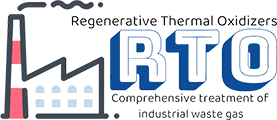معلومات اساسية.
نموذج رقم.
Amazing ceramic
يكتب
محرقة
توفير الطاقة
100
Excellent Material
100
كفاءة عالية
100
العلامة التجارية
بجامازينج
حزمة النقل
Overseas Package
مواصفة
111
أصل
الصين
رمز النظام المنسق
111111
وصف المنتج
Accumulator Ceramic
RTO adopt ceramic accumulator, which has excellent heat storage performance, less heat loss and high efficiency in heat exchanging .
Ceramic accumulating body adopts LANTEC MLM series product, which embodies the merits of large specific surface area, small resistance, large heat volume, heat resistance can up to 1200ºC, high anti-acid fastness, small water absorption, small thermal expansion coefficient, better anti-cracking ability, long lifet Specification
High Temperature Air Combustion Technology(HTAC) have dual effects on energy saving and environment protection. Comparing with the conventional combustion technology, CHINAMFG will save approximately 20-50% fuels, decrease the oxidation and lgnition loss by 20%,reduce NOx emissions by 40% and bring up the production output > 20%.
** L*W*H(mm) |
Quantity of channels |
Channel width |
Wall thickness |
Side wall thickness |
Specific surface area |
Void% |
Section shape |
200*100*100 | 20*9 | ¢8.5 Round channel | 2.3 | 2.5 | 280 | 51 |
|
150*100*100 | 36*24 | ¢3*3 Square channel | 1.1 | 1.2 | 734 | 52 |
|
150*100*100 | 35*20 | ¢4 Hexagon channel | 1.0 | 1.2 | 687 | 65 |
|
150*100*100 | 10*6 | ¢12 Hexagon channel | 4.0 | 4.0 | 210 | 50 |
|
150*100*100 | 35*20 | ¢3.5 Hexagon channel | 1.5 | 1.5 | 570 | 50 |
|
150*100*100 | 17*13 | ¢7.5 Round channel | 1.2 | 1.3 | 366 | 57 |
|
150*100*100 | 33*19 | ¢4 Round channel | 1.0 | 1.3 | 568 | 53 |
|
150*100*100 | 15*9 | ¢8.5 Round channel | 2.3 | 2.5 | 280 | 51 |
|
150*100*100 | 38*22 | ¢3.6 Hexagon channel | 0.9 | 1.2 | 696 | 63 |
|
150*100*100 | 42*28 | ¢2.6*2.6 Square channel | 1.0 | 1.1 | 815 | 53 |
|
100*100*100 | 7*6 | ¢12 Hexagon channel | 4.0 | 4.0 | 224 | 52 |
|
100*100*100 | 31*31 | ¢2.65*2.65 Square channel | 0.55 | 0.7 | 1065 | 67 |
|
100*100*100 | 24*24 | ¢3*3 Square channel | 1.1 | 1.2 | 741 | 52 |
|
100*100*100 | 23*20 | ¢4 Hexagon channel | 1.0 | 1.2 | 608 | 84 |
|
100*100*100 | 10*9 | ¢8.5 Round channel | 2.3 | 2.5 | 280 | 51 |
|
ceramic accumulator, ceramic accumulator, ceramic accumulator, honeycomb
العنوان: الطابق الثامن، E1، مبنى Pinwei، طريق Dishengxi، Yizhuang، ZheJiang، الصين
نوع العمل: مصنع/شركة تصنيع، شركة تجارية
نطاق العمل: الكهرباء والإلكترونيات، المعدات والمكونات الصناعية، آلات التصنيع والمعالجة، المعادن والطاقة
شهادة نظام الإدارة: ISO 9001، ISO 14001
المنتجات الرئيسية: Rto، خط طلاء الألوان، خط الجلفنة، سكين الهواء، قطع غيار لخط المعالجة، الطلاء، المعدات المستقلة، بكرة الحوض، مشروع التجديد، المنفاخ
مقدمة عن الشركة: شركة ZheJiang Amazing Science & Technology Co., Ltd هي شركة مزدهرة عالية التقنية، تقع في منطقة التنمية الاقتصادية والتكنولوجية في ZheJiang (BDA). تلتزم شركتنا بمفهوم الواقعية والإبداع والتركيز والكفاءة، وتخدم بشكل أساسي صناعة معالجة غازات النفايات (VOCs) والمعدات المعدنية في الصين وحتى العالم أجمع. لدينا تكنولوجيا متقدمة وخبرة غنية في مشروع معالجة غازات النفايات VOCs، والذي تم تطبيق مرجعه بنجاح في صناعة الطلاء والمطاط والإلكترونيات والطباعة وما إلى ذلك. لدينا أيضًا سنوات من تراكم التكنولوجيا في البحث وتصنيع خط معالجة الفولاذ المسطح، ونمتلك ما يقرب من 100 مثال للتطبيق.
تركز شركتنا على البحث والتصميم والتصنيع والتركيب والتشغيل لنظام معالجة غاز النفايات العضوية المتطايرة ومشروع تجديد وتحديث خط معالجة الفولاذ المسطح لتوفير الطاقة وحماية البيئة. يمكننا تزويد العملاء بالحلول الكاملة لحماية البيئة وتوفير الطاقة وتحسين جودة المنتج وغيرها من الجوانب.
نحن نشارك أيضًا في قطع الغيار المختلفة والمعدات المستقلة لخط طلاء الألوان، خط الجلفنة، خط التخليل، مثل الأسطوانة، المقرن، المبادل الحراري، جهاز الاسترداد، سكين الهواء، المنفاخ، اللحام، مستوي التوتر، ممر الجلد، مفصل التمدد، القص، الموصل، الخياطة، الموقد، الأنبوب المشع، محرك التروس، المخفض، إلخ.
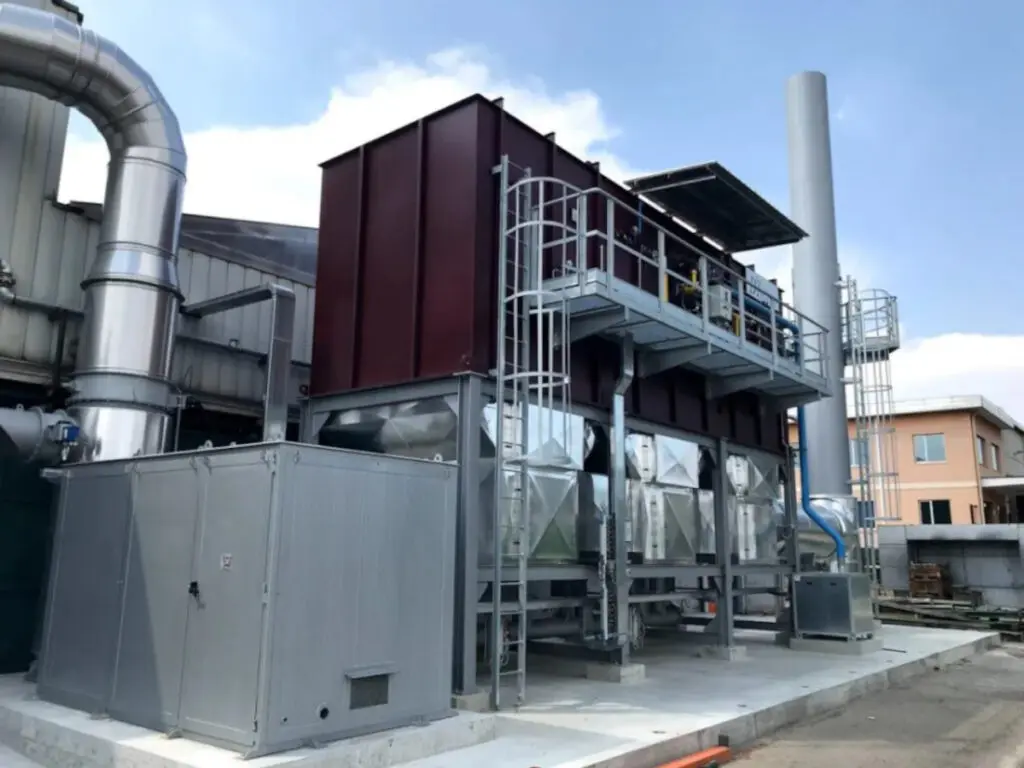
What is the role of heat recovery in a regenerative thermal oxidizer?
Heat recovery plays a crucial role in the operation of a regenerative thermal oxidizer (RTO) by improving its energy efficiency and reducing fuel consumption. The primary function of heat recovery in an RTO is to capture and transfer heat from the treated exhaust gases to the incoming untreated gases, minimizing the need for additional external heating.
Here’s a closer look at the role of heat recovery in an RTO:
- كفاءة الطاقة: RTOs are designed to achieve high thermal efficiency by utilizing the heat recovery principle. The heat recovery system consists of heat exchangers or beds filled with ceramic media, such as structured ceramic blocks or random ceramic saddles. These beds alternate between the exhaust gas flow and the incoming untreated gas flow.
- Heat Transfer Process: During operation, the hot exhaust gases from the industrial process flow through one bed of the heat exchanger, transferring heat to the ceramic media. The media absorbs the heat, and the temperature of the exhaust gases decreases. Simultaneously, the cooler incoming untreated gas flows through the other bed, where it absorbs the heat stored in the media, preheating the gas before it enters the combustion chamber.
- Bed Switching: The direction of gas flow through the beds is periodically switched using valves or dampers. This switching operation allows the RTO to alternate between different beds, ensuring continuous heat recovery and thermal oxidation of the pollutants. By efficiently recovering and reusing heat from the exhaust gases, the RTO reduces the amount of external fuel needed to maintain the required operating temperature.
- Reduction in Fuel Consumption: The heat recovery mechanism in an RTO significantly reduces the fuel consumption compared to other types of oxidizers. The preheating of the incoming untreated gas stream reduces the energy required to raise the temperature of the gas to the combustion temperature, resulting in lower fuel usage and operational costs.
- Economic and Environmental Benefits: Heat recovery in RTOs offers economic benefits by reducing energy costs and improving the overall sustainability of the facility. By minimizing fuel consumption, heat recovery contributes to a lower carbon footprint and helps meet environmental goals by reducing greenhouse gas emissions associated with the combustion process.
The effectiveness of heat recovery in an RTO depends on factors such as the design of the heat exchanger, the choice of ceramic media, the flow rates of the exhaust gases and incoming untreated gas, and the temperature differential between the two streams. Proper sizing and optimization of the heat recovery system are essential to ensure efficient heat transfer and maximize energy savings.
Overall, heat recovery is a key component in the design of an RTO, allowing for improved energy efficiency, reduced fuel consumption, and environmental sustainability.
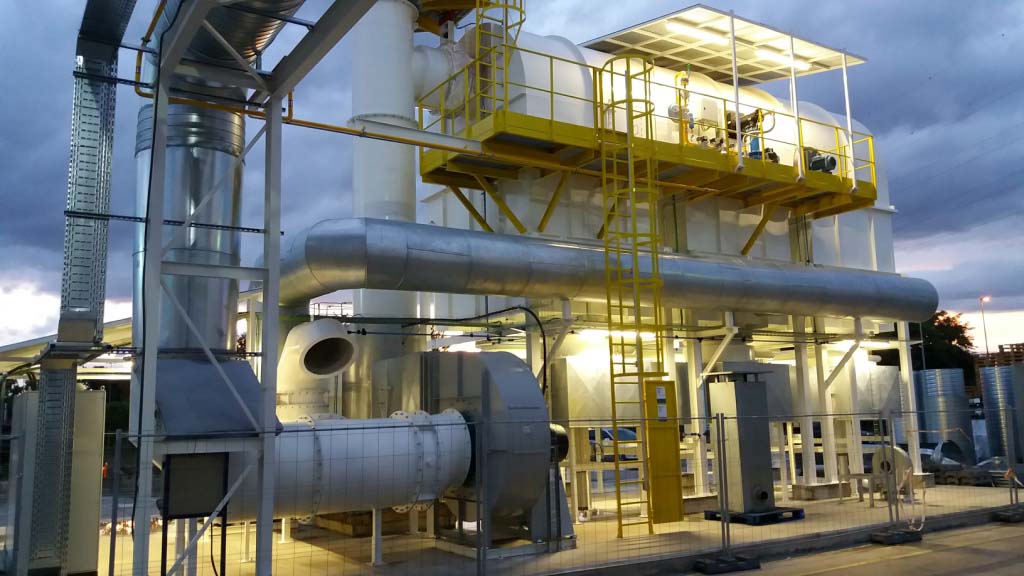
Can regenerative thermal oxidizers be used for treating emissions from pharmaceutical processes?
Yes, regenerative thermal oxidizers (RTOs) can be effectively used for treating emissions from pharmaceutical processes. Pharmaceutical manufacturing processes often generate volatile organic compounds (VOCs) and hazardous air pollutants (HAPs) that need to be controlled to comply with environmental regulations and ensure air quality. Here are some key points regarding the use of RTOs for treating emissions from pharmaceutical processes:
- التحكم في الانبعاثات: تم تصميم أجهزة الطرد المركزي لتحقيق كفاءة تدمير عالية للمركبات العضوية المتطايرة والمركبات الضارة بالبيئة. تتأكسد هذه الملوثات داخل جهاز الطرد المركزي عند درجات حرارة عالية، وعادة ما تكون أعلى من كفاءة 95%، مما يحولها إلى ثاني أكسيد الكربون (CO2)2) and water vapor. This ensures effective control and reduction of emissions from pharmaceutical processes.
- توافق العملية: RTOs can be integrated into the exhaust systems of various pharmaceutical processes, capturing and treating the emissions before they are released into the atmosphere. The RTO is typically connected to the process equipment or exhaust stack, allowing the VOC-laden air to pass through the oxidizer for treatment.
- المرونة: RTOs offer flexibility in handling a wide range of operating conditions and pollutants. Pharmaceutical processes can vary in terms of flow rates, temperature, and composition of emissions. RTOs are designed to accommodate these variations and provide effective treatment even under fluctuating conditions.
- استعادة الحرارة: تتضمن وحدات الاسترداد الحراري أنظمة تبادل حراري تسمح باستعادة الطاقة الحرارية وإعادة استخدامها. تلتقط المبادلات الحرارية داخل وحدة الاسترداد الحراري الحرارة من غازات العادم الخارجة وتنقلها إلى تيار الهواء أو الغاز الداخل للعملية. تعمل عملية استعادة الحرارة هذه على تحسين كفاءة الطاقة الإجمالية للنظام وتقليل الحاجة إلى استهلاك وقود إضافي.
- الالتزام باللوائح: Pharmaceutical processes are subject to regulatory requirements for air quality and emissions control. RTOs are capable of achieving the necessary destruction efficiencies and can help pharmaceutical manufacturers comply with environmental regulations. The use of RTOs demonstrates a commitment to sustainable practices and responsible management of air emissions.
It is important to note that the specific design and configuration of the RTO, as well as the characteristics of the pharmaceutical emissions, should be considered when implementing an RTO for a specific application. Consulting with experienced engineers or RTO manufacturers can provide valuable insights into the proper sizing, integration, and performance requirements for treating emissions from pharmaceutical processes.
In summary, RTOs are a suitable and effective technology for treating emissions from pharmaceutical processes, providing high destruction efficiencies, compatibility with various processes, flexibility in handling operating conditions, heat recovery, and compliance with environmental regulations.
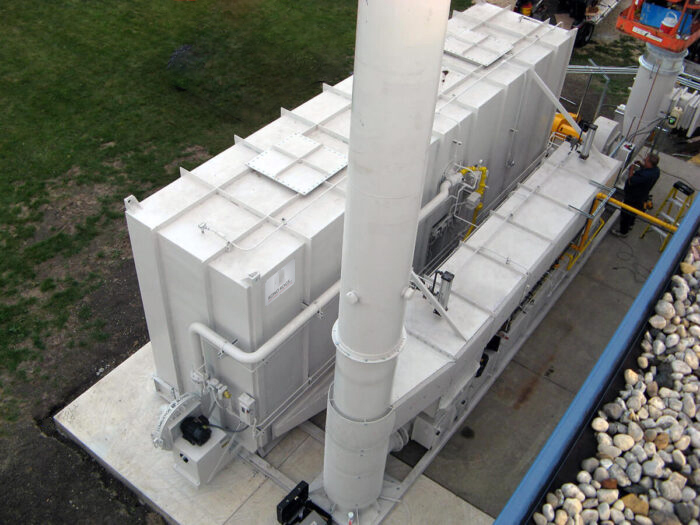
What are the benefits of using a regenerative thermal oxidizer?
A regenerative thermal oxidizer (RTO) is an advanced air pollution control technology used in industrial processes to remove volatile organic compounds (VOCs), hazardous air pollutants (HAPs), and other harmful emissions. The use of an RTO offers several benefits:
1. كفاءة تدمير عالية: RTOs are known for their high destruction efficiency, typically achieving over 99% destruction of VOCs and HAPs. This effectiveness ensures that the majority of harmful pollutants are eliminated, resulting in cleaner air emissions and compliance with environmental regulations.
2. Energy Efficiency: RTOs are designed to be energy-efficient systems. They utilize a regenerative process that recovers and preheats the incoming process air by capturing and transferring heat from the outgoing exhaust stream. This heat recovery mechanism significantly reduces the energy consumption of the system, making RTOs a cost-effective solution for air pollution control.
3. Cost Savings: The energy efficiency of RTOs translates into cost savings for industrial operations. By reducing fuel consumption and operating costs, businesses can achieve long-term financial benefits. Additionally, the high destruction efficiency of RTOs eliminates the need for additional downstream pollution control equipment, reducing capital and maintenance expenses.
4. Thermal Self-Sustainability: RTOs have the unique ability to sustain their operating temperature without the need for external fuel sources. Once the system reaches the desired operating temperature, the heat recovery process maintains the necessary thermal energy for oxidation. This self-sustainability reduces reliance on external fuel, enhances system reliability, and minimizes operational downtime.
5. Flexibility and Adaptability: RTOs are versatile and can be designed to accommodate a wide range of process exhaust volumes and pollutant concentrations. They can handle varying flow rates, inlet temperatures, and pollutant loadings, making them suitable for diverse industrial applications. RTOs can be customized to meet specific process requirements, ensuring optimal performance and adaptability.
6. Low Maintenance Requirements: RTOs are known for their low maintenance requirements. The absence of complex moving parts and the self-sustaining nature of the system contribute to minimal maintenance needs. Routine inspections, periodic checks, and basic preventive maintenance are usually sufficient to keep the RTO operating efficiently. This reduces downtime and maintenance costs for industrial facilities.
7. Environmental Compliance: By effectively removing VOCs, HAPs, and other pollutants, RTOs enable industrial facilities to achieve and maintain compliance with environmental regulations. This ensures that the emissions from the manufacturing or process operations meet the required air quality standards, protecting the environment and surrounding communities.
The benefits of using a regenerative thermal oxidizer, including high destruction efficiency, energy efficiency, cost savings, thermal self-sustainability, flexibility, low maintenance requirements, and environmental compliance, make it a preferred choice for many industries seeking effective and sustainable air pollution control solutions.
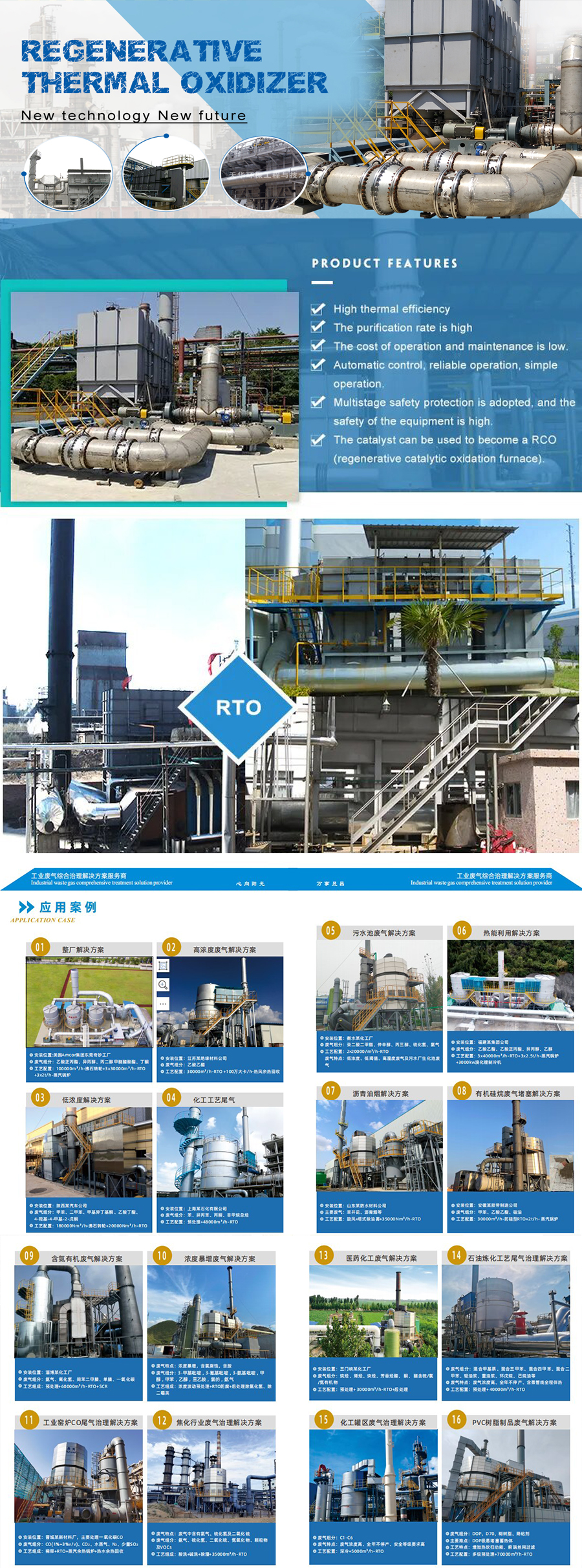
editor by CX 2023-10-15
